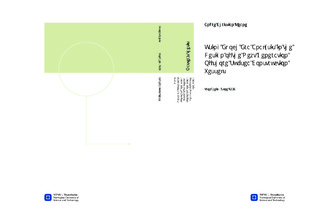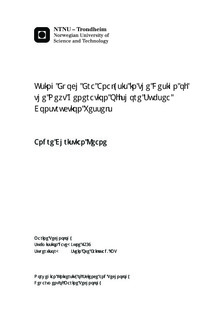| dc.description.abstract | This thesis examines the plausibility of using Epoch-Era Analysis during conceptual design of the next generation offshore subsea construction vessel (OSCV). Spurred by high oil prices and a decreasing level of accessible carbon resources, OSCVs have to a larger degree become qualified as flexible and cost efficient solutions for marginal fields. The reduction of easy oil has led to a push towards harsher regions, at deeper operational depths and farther from shore. Consequently, the market and technology is in constant development continuously leading to new requirements, regulations and legislation being imposed on the ship building process.Facing these challenges, designers are expected to account for broader, multi-faceted future scenarios, while simultaneously improving performance and decreasing cost. Leading to an exorbitant amount of information needing to be incorporated and accounted for, while future uncertainty increases exponentially the further one looks. Coupled with a widespread tendency many owners have of optimizing designs to the initial obtainable contract, the impact of future uncertainties on earning capability and cost, have to a certain degree been neglected because of its difficulty to model. This work utilizes a comprehensive Epoch-Era Analysis in an attempt to highlight the benefits especially present in complicated and highly uncertain scenarios. A developed segment of code was used to create the foundation data, which is further analyzed in Tableau. The resulting analysis yields favorable results in terms of illustrating the potential Epoch-Era Analysis has as a tool to decompose complicated information and turning it into valuable insights for stakeholders to evaluate, inherently making communication with designers much clearer and unambiguous. Key aspects include the ability of revealing and defining which features and capabilities stakeholders actually value and evaluating all possible design solutions accordingly to identify attractive cost-benefit ratios, and at the same time discover which future scenarios are the most profitable. Adding constraints to the analysis also enabled a coherent mapping of which possible designs are applicable to probable future scenarios, according to any requirements imposed. The results imply that the use of Epoch-Era Analysis during conceptual design can most certainly provide invaluable acumen with an inherent capability of increasing stakeholders confidence in their final choice of design. This increased level of confidence also simplifies their message to the designer, making it much easier to interpret and accordingly optimize the vessel. Through the use of this analysis exogenous circumstances such as technology or market developments otherwise difficult to capture, can be deconstructed and taken into consideration through a more factual perspective leading to lesser risk and higher value. | nb_NO |

